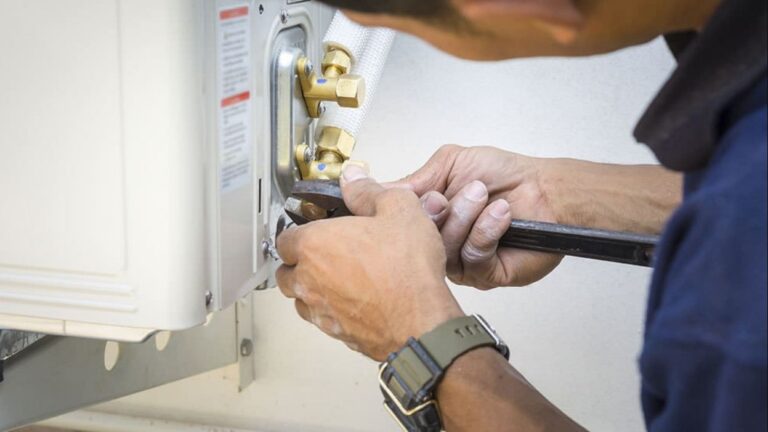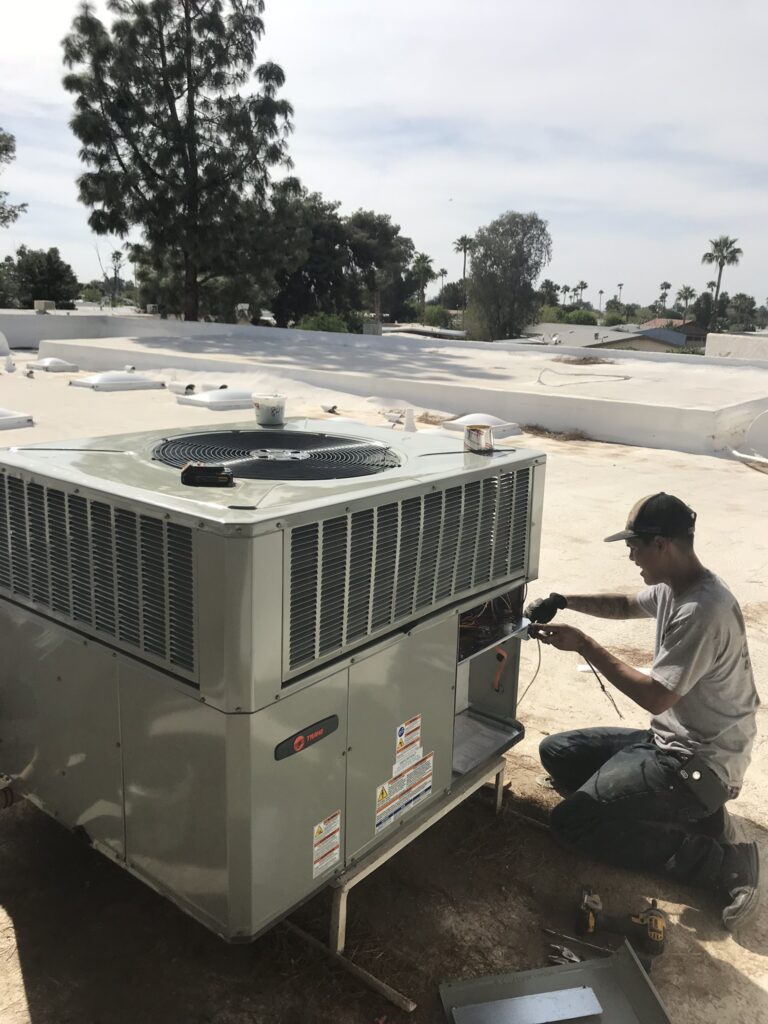What is geothermal hvac
If you’re like most people, you probably think of geothermal energy as something that’s used to power homes and businesses. But did you know that geothermal energy can also be used to heat and cool your home? That’s right, geothermal HVAC systems are becoming increasingly popular, thanks to their many benefits. Not only are they more environmentally-friendly than traditional HVAC systems, but they’re also more efficient and can save you money on your energy bills. So if you’re thinking about upgrading your HVAC system, be sure to consider a geothermal system. It just might be the best decision you ever make!
What is Geothermal HVAC?
Geothermal HVAC is a technology that uses the earth’s constant underground temperature to heat and cool your home or business. A geothermal system consists of a heat pump, ground loop, and air delivery system. The heat pump uses the earth loop to extract or absorb heat from the ground, depending on whether you are heating or cooling your home. The air delivery system then distributes the conditioned air throughout your home or business. Geothermal systems are among the most energy efficient systems available, because they take advantage of the earth’s constant temperature to provide heating and cooling. Geothermal systems can also be used for other applications such as water heating, pool heating, and snow melting.
How Geothermal HVAC Works
Geothermal HVAC systems use the earth’s natural heat to warm your home in the winter and cool it in the summer. A geothermal heat pump, the unit that makes this possible, circulates a mixture of water and glycol through a loop of high-density polyethylene pipe buried in the ground. In the winter, the heat pump extracts warmth from the earth and transfers it to your home. In the summer, the process is reversed, and your home’s warmth is transferred back into the earth.
The Benefits of Geothermal HVAC
1.With a geothermal HVAC system, you could potentially save up to 70% on your energy costs.
2. Geothermal HVAC systems are environmentally friendly because they don’t release pollutants or greenhouse gases into the atmosphere.
3. Geothermal HVAC systems are quiet and have very few moving parts, so they require little to no maintenance.
4. Geothermal HVAC systems can provide both heating and cooling, so you’ll be comfortable all year round.
5. Geothermal HVAC systems are durable and can last for many years with proper maintenance.
The Cost of Geothermal HVAC
The high initial investment for a geothermal HVAC system is the biggest obstacle for many homeowners. A geothermal unit can cost anywhere from $7,500 to $30,000, and sometimes even more. The price of a geothermal unit will depend on the size of your home, the climate, the ground conditions, and other factors.
The Future of Geothermal HVAC
Although the earth has been cooling for the past few decades, the average global temperature is still about 14°F above it was before the Industrial Revolution. That’s why many experts believe that we need to find new ways to heat and cool our buildings without using fossil fuels. Geothermal HVAC systems are a promising option for doing just that. Geothermal HVAC systems are not a new technology. In fact, they’ve been used for centuries to heating homes and public spaces. The basic principle behind them is simple: they take advantage of the fact that the ground (or water) below the frost line is a constant temperature of around 50°F. In a geothermal HVAC system, a heat pump is used to transfer heat from the ground (or water) into a building in winter, and from a building into the ground (or water) in summer. This process is much more efficient than using air conditioners or furnaces, because it doesn’t require any energy to create the heat or coolness – it just transfers it. The main disadvantage of geothermal HVAC systems is that they require a lot of upfront investment. The initial cost of installation can be several times higher than traditional systems. However, this cost is offset by the fact that geothermal HVAC systems are much more efficient, so they will save you money on your energy bills in the long run. There are also some environmental concerns associated with geothermal HVAC systems. If not properly maintained, they can release harmful chemicals into the ground or water. However, these concerns are generally outweighed by the fact that geothermal HVAC systems don’t use any fossil fuels and don’t produce any carbon emissions. Overall, geothermal HVAC systems are a promising option for heating and cooling buildings without harming the environment. As the technology continues to develop, it’s likely that we will see more and more buildings using this type of system in the future.
Geothermal HVAC Case Studies
The following are a few examples of commercial and residential buildings that have installed geothermal HVAC systems. The Empire State Building, one of the most iconic skyscrapers in the world, completed a $500 million energy retrofit in 2009. One of the key components of this upgrade was the installation of a ground-source heat pump system that serves the entire building. This system provides heating and cooling for more than 2 million square feet (185,000 square meters) of space and is expected to reduce energy costs by $4.4 million per year. In another well-known application, the National Elk Refuge Visitor Center in Jackson Hole, Wyoming replaced its aging boiler and air conditioning system with a water-to-water geothermal heat pump system in 2007. The new system provides heating and cooling for more than 10,000 square feet (930 square meters) of space and is expected to save $5,000 per year in energy costs. Geothermal HVAC systems are also being used in a growing number of residential applications. In many cases, these systems can be used to supplement or replace traditional ducted forced-air systems. For example, a home in San Antonio, Texas was outfitted with a hybrid geothermal/forced-air system that provides heating and cooling for more than 3,500 square feet (325 square meters) of space. The homeowners are expecting to save 30% on their energy bills as a result of this upgrade.
Geothermal HVAC Myths
Much like other renewable energy systems, Geothermal Heat Pumps (GHPs) have their own set of myths. Below are seven of the most common GHPs myths.
1. Myth: GHPs are too expensive. Geothermal heat pumps can have a higher initial cost than other HVAC systems, but they are one of the most cost-effective options in the long run. Thanks to their efficiency and low operating costs, GHPs typically save homeowners 30-60% on their heating and cooling bills. In some cases, the savings can be even higher.
2. Myth: GHPs are difficult to maintain. Geothermal heat pumps are actually very low maintenance systems. The underground loop system is the only part of the system that requires regular maintenance, and even that is minimal. In most cases, the only maintenance required is an annual inspection and possible cleaning if the system is located in an area with a lot of debris or vegetation.
3. Myth: GHPs are not environmentally friendly. Geothermal heat pumps are actually one of the most environmentally friendly HVAC options available. They have a small carbon footprint and do not release any harmful emissions into the atmosphere. Additionally, they use renewable energy from the earth’s heat to operate, so they do not rely on fossil fuels like other HVAC systems do.
4. Myth: GHPs are loud. Geothermal heat pumps are actually very quiet systems. The only time you will hear any noise from a GHP is when the fan turns on to circulate air through the ductwork. Even then, the noise is minimal and will not be disruptive to your everyday life.
5 .Myth: GHPs take up a lot of space.. Geothermal heat pumps do not take up much space since they use an underground loop system instead of an outdoor condenser unit like other HVAC systems do.. This makes them ideal for homes with limited yard space or those in urban areas where every square foot counts..
6 .Myth: GHPs only work in certain climates.. Geothermal heat pumps can be used in any climate, but they are most efficient in moderate climates where there is little temperature variation throughout the year.. In colder climates, GHPs can be used to supplement another heating system, such as a furnace, to reduce overall energy costs.. Additionally, some newer GHP models come equipped with a desuperheater which can provide hot water for your home as well..
7 .Myth: GHP installation is disruptive.. Installing a geothermal heat pump is no more disruptive than installing any other type of HVAC system.. In most cases, the underground loop system can be installed with minimal excavation and without disrupting your landscaping..
Geothermal HVAC FAQs
1.What is a geothermal heating and cooling system? A geothermal heating and cooling system, also known as a ground-source heat pump, is a type of HVAC (heating, ventilation, and air conditioning) system that uses the earth’s thermal energy to provide heating and cooling for a home or building.
2. What are the benefits of geothermal HVAC systems? There are many benefits to using a geothermal HVAC system, including increased energy efficiency, lower operating costs, and cleaner emissions. Geothermal systems can also provide uninterrupted heating and cooling comfort year-round.
3. How does a geothermal system work? A geothermal heating and cooling system uses the earth’s thermal energy to heat and cool your home or building. The earth’s temperature remains fairly constant just a few feet below the surface, so a geothermal system can take advantage of this constant temperature to heat or cool your home or building as needed.
4. How efficient are geothermal systems? Geothermal heating and cooling systems are among the most efficient HVAC systems available today. In fact, they can provide up to four times the amount of energy they use in the form of heating or cooling for your home or building.
5. Are there any tax credits or other incentives available for geothermal systems? There are several federal, state, and local incentives available for geothermal systems, including tax credits and rebates. These incentive programs can help offset the initial cost of installing a geothermal system in your home or business
Geothermal HVAC Resources
How Geothermal HVAC Systems Work: Geothermal HVAC systems move heat between your home and the ground using a ground-source heat pump. In winter, the system pulls heat from the ground and transfers it into your home. In summer, the process is reversed, and your home’s heat is transferred into the ground. The U.S. Department of Energy (DOE) reports that a geothermal HVAC system can reduce heating and cooling costs by 30 to 60 percent when compared with a conventional HVAC system. Additionally, because a geothermal system doesn’t rely on fossil fuels, it doesn’t produce carbon pollution or other greenhouse gases. Geothermal HVAC System Components: A typical geothermal HVAC system includes four components: 1. A ground-source heat pump that moves heat between your home and the earth loop 2. An earth loop that consists of pipes buried in the ground near your home 3. A circulating fluid that transfers heat between the ground loop and the heat pump 4. A desuperheater that can be used to supplement your water heater
Geothermal HVAC News
Geothermal HVAC news stories on Energy Star’s geothermal products program.





